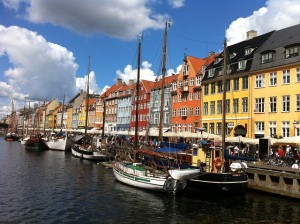Can Seng Ooi in this interview shares his thoughts on place branding practices in Copenhagen and his native Singapore and the links between city branding, culture and sustainability.
Learn about:
- The different perspectives on the relationship between culture and place branding;
- How place branding can help urban sustainability;
- Which paradoxes any place branding exercise must deal with;
- How Singapore has succeeded in increasing its profile;
- Whether place branding research and practice differ between Europe and Asia;
- The main challenges in place branding today.
Can Seng, you are a business professor at CBS but describe yourself as a sociologist and anthropologist – why?
I was trained as an anthropologist and sociologist at the National University of Singapore before I joined Copenhagen Business School. Over the years, I have managed to cross various disciplines and used different research methods in my work. The label I use depends on the situation and context. We call this situational identity.
I conduct research in a number of areas besides place branding. They include art worlds, tourism, urban sustainability and cross-cultural interaction. I teach mainly MBA classes on international business and corporate social responsibility.
When did you first get interested in place branding?
I started work on place branding in 1996, when I was doing my PhD project on cultural tourism in Singapore and Copenhagen. At that time, destination branding was an almost unheard area of research. I used the term ‘brand identity’ to frame the poetics and politics of branding destinations. The contrasting approaches of the Danish and Singaporean authorities intrigued me.
Your research focuses on culture and place branding – how do the two influence each other?
There are different perspectives on the relationship between culture and place branding. We often assume that a place brand should describe and reflect the place and its culture.
From another perspective, a place brand is aspirational, and the place brand can be used as a ‘blueprint’ to shape – if not social engineer – the local culture. In practice, both perspectives are often used in a dialogical manner.
Did place branding play a role during your time as researcher in Singapore?
This is a difficult question to answer because it depends on whether one thinks that a place brand is inherent or whether it is a construct. Having done years of research in a soft-authoritarian country – Singapore – I have seen how effective social life can be shaped through policies.
The evolving destination branding of Singapore is part of the wider social engineering mechanism of the city-state.
I wrote quite a bit about the touristification of Singaporeans. This background follows me when I came to Europe.
From a place branding perspective, are there differences between Copenhagen and Singapore?

It is always possible to find differences and similarities between two places. If we accept that place branding is an exercise at bringing about a coherent and single message to the world, then the top-down approach of Singapore is quite efficient and effective.
Denmark, in that context, suffers from the “inconveniences” of democracy. It is difficult for the Danes to find a consensus among different stakeholders on one single message or image. But on the other hand, the more democratic Danish approach creates authentic messages, and communicates the views of the community.
How can place branding help achieve urban sustainability?
There are several ways of doing so. If one sees place branding as part of a wider urban regeneration project, then issues of physical, social and economic sustainability can be integrated into the project. If place branding is seen as a marketing exercise, then urban sustainability can be a focal point to inspire residents.
Does place branding research and practice differ between Europe and Asia?
I am going out on a limb by answering this question. I don’t think there is any generic European or Asian approaches to place branding. Regardless in Europe, there is still much concern with authenticity of the brand, and the necessity to garner local support. This is easier said than done.
In the Asian context, the place brand has to be authentic too but that authenticity can be cultivated over time. The place brand is thus aspirational. The research reflects that too.
Which are the main challenges in place branding today?
There is a set of paradoxes that any place branding exercise must deal with. The first is the ability to communicate a single, clear message to a very heterogeneous group of audiences around the world that will interpret the brand in diverse ways.
The second paradox is to balance a place branding approach that leads from the top and yet harness energies from the ground up. The third is to allow the branding exercise to change society and at the same time, keep society’s authenticity.
Singapore is often seen as successful example for nation branding. Do you agree? What makes it so special?
Singapore has succeeded in many ways in increasing its profile. One major factor is that it takes the accreditation approach to place branding seriously.
The accreditation approach to place branding contrasts against the idea that a place brand must accentuate the uniqueness of the place.
Instead, the authorities concentrate on the remaking and re-branding of Singapore by aligning with the preconceptions and pre-awareness of international audiences.
This is the point I made in my recent book chapter titled “The making of the copy-cat city: Accreditation tactics in place branding”, published in [easyazon_link identifier=”178347033X” locale=”US” tag=”tpbous-20″]Branding Chinese Mega-Cities: Policies, Practices and Positioning[/easyazon_link] (2014, edited by Per Olof Berg and Emma Björner).
Thank you, Can Seng.
Connect with Can Seng Ooi on LinkedIn or learn more about his work here.
Enjoyed our interview with Can Seng Ooi on the links between place branding, culture and sustainability? Share and spread the word!


